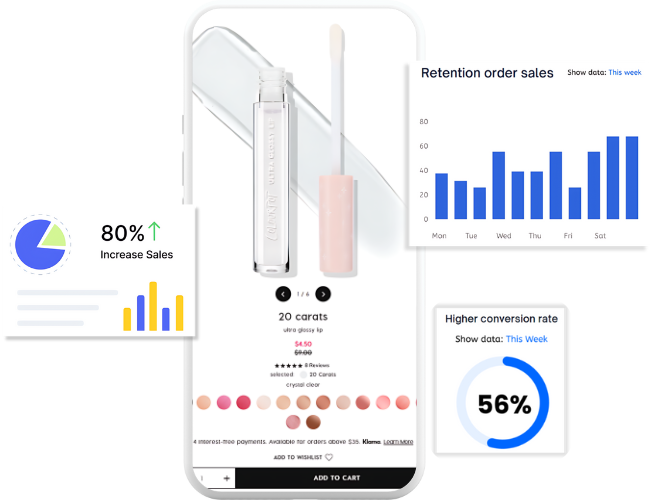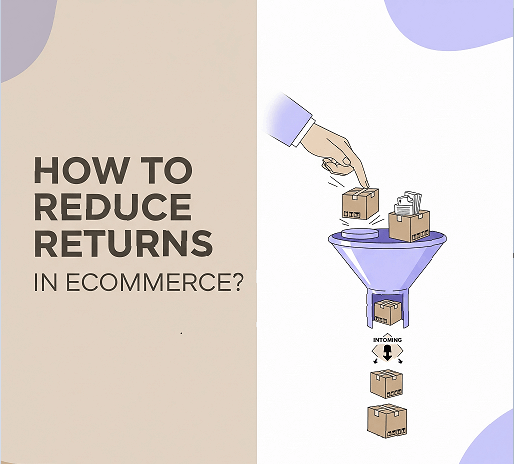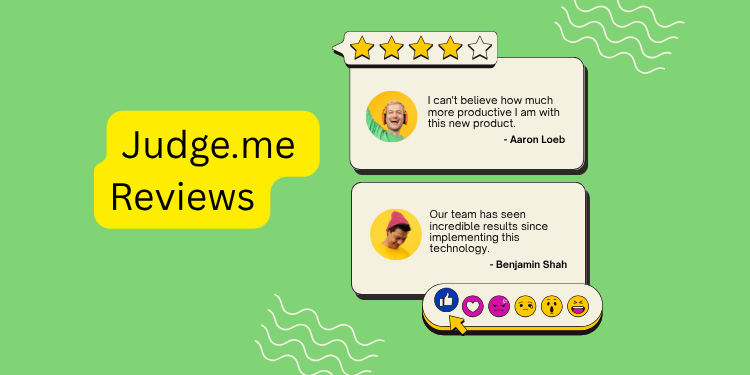Do you ever find yourself wondering what Shopify is used for?
Shopify commands about 16.36% of e-commerce business, with over 4.8 million stores on the platform in 175 countries. However, only a tiny 5–10% of these stores can meet their goals and turn a profit.
Many merchants fail because they fail to understand how Shopify works. So they find it hard to leverage Shopify ep capabilities to get a competitive advantage in a cutthroat marketplace.
We also guide you in unraveling Shopify’s powerful and revolutionary functionalities that help you effortlessly set up, manage, and scale your online business.
What is Shopify?
Shopify is a comprehensive e-commerce platform that helps merchants of any size build, manage, and grow their online stores easily. The platform offers all the technology tools and services that help merchants set up a store, process and fulfill orders, manage inventory, and communicate with customers.
It is easy to use, with an extensive graphical user interface that enables even users with little technical knowledge to build and customize their online stores, with few limitations in what they can design.
Shopify’s SaaS-based platform enables accessibility from anywhere, simplifying collaboration. The cloud-based system also allows it possible to sell across sales channels and accept payments from various payment gateways with ease. It also relieves users of the worry about upgrading and maintaining the software or web servers.
How Does Shopify Work?
Shopify works by providing all the technology tools you need to set up and run your online store on a single platform. The software enables the integration of product data and customer operational tasks in one system that smoothly connects with all your sales channels, online and offline.
With a highly user-friendly interface, Shopify makes doing online business simple, even for those without technological knowledge.
Here are the steps on how to set up, run, and even scale your online business successfully:
Establish Your Store
Sign up for Shopify. You can try it for free for three days to decide if it works for you and what plan is most suitable.
Next, build a store. Clicking on the Start Free Trial button in the top right corner of any Shopify website page will launch you into a series of prompts to make the process effortless. Take advantage of Shopify’s extensive range of design options to communicate your brand. Also, take your time organizing your product presentation to enhance the shopping experience.
Set up a payment system. Shopify has its own Shopify Payments, which is easier and cheaper. You can activate it from the Payments page in Shopify settings. However, it is not universally available. Nonetheless, Shopify accepts many standard third-party payment gateways, which you can choose from the Shopify payments gateway page.
One can also add a buy button to your other online sales channels and set up a POS system for your offline store.
Sell with Shopify
To begin selling with Shopify, you need to set up a fulfillment profile. Typical fulfillment methods include shipping, local delivery, or local pick-up. You can also choose to fulfill orders yourself through Shopify Shipping or use a third-party Shopify fulfillment service that integrates with Shopify or is customized.
Also, you can make the fulfillment process automatic or manual.
Shopify prompts you to choose a fulfillment process for every product you upload, which enables you to tailor the fulfillment method to the product.
Set up inventory tracking from the inventory page on Shopify admin to help you keep track of and manage inventory levels or view changes in the inventory reports.
Use Shopify omnichannel features to seamlessly sell through your offline and online store, Shop channel, website or blog, Facebook, Instagram, or Shopify Inbox. Add each sales channel to Shopify so that it is listed under the Shopify Sales Channels.
Manage your store
Set up the order tracking functionality to make it straightforward for your customers to track their orders. To do so, set up an email template by customizing or using a Shopify email template. Use the email template to send the order tracking number and order status page. Email templates like order confirmation, shipping confirmation, and shipping update can carry a link to the status of the order page.
To manage customer relations, download from many of the CRM apps that Shopify integrates with, or take advantage of Shopify’s APIs to integrate your CRM.
Use Shopify Balance to bank your revenue, though it only offers basic checking account features. Shopify Capital will help you overcome minor and temporary cash flow crunches.
#1 Shopify Tracking Solution for eCommerce
How much does Shopify cost?
Shopify offers a tiered pricing plan that can scale with your business. Whatever stage of growth you are at, there is a Shopify plan with features to suit it. Still, its core features include an online store, top conversion checkout, multiple sales channels, and the ability to integrate with over 3000 commerce apps.
New users can try it out for free for three days without requiring credit card information. Then, they can pick from any of Shopify’s pricing plans. The first three plans also offer you the first month at only $1.
Basic Shopify
Ideal for solopreneurs, the Basic Shopify plan costs $32 a month, or $24 a month if you pay yearly. Shopify also charges 2% transaction fees.
With Basic Shopify, you get all the core features to set up and run an online store. Link up to 10 inventory locations to make tracking and fulfilling orders easier and sell internationally with localized global selling. Insights from standard analytics help you understand your business and customers better.
However, this plan offers no option for adding staff accounts; you have to upgrade your plan for that feature. Still, you can create collaborator accounts with limited access to your store.
Shopify
The Shopify plan costs $92 a month, or $69 a month if you pay yearly, as well as 1% transaction fees.
Besides the features contained in Basic Shopify, Shopify offers the option to add up to 5 staff accounts and collaborator accounts, making it great for businesses run by a modest team. The plan also has gift card purchase support.
Shopify Advanced
Shopify Advanced costs $399 a month, or $299 a month if you pay yearly, as well as 0.6% transaction fees.
Designed for growing businesses, the pricing plan lets you add up to 15 staff and collaborator accounts. It also features customized reports and analytics that let you choose the parameters you want insight on, either from scratch or by editing a template.
With added global customization, you can segment your market by country and customize content accordingly, giving your brand greater reach and improving conversion rates. However, you need to pay an extra $59 a month per market for this feature.
Shopify Advanced offers enhanced checkout capacity at 10 times the standard, which improves the shopping experience during significant sale events. The plan also calculates third-party shipping rates and estimates customs duties and taxes for the total cost.
Shopify Advanced also offers you enhanced 24/7 live chat support.
Shopify Plus
Shopify Plus costs start at $2300 monthly at the cheapest, with a one-year or three-year plan. However, you need a quotation that will cost you monthly, as the exact price varies widely. Website build fees, Shopify license fees, payment processing fees, app fees, and costs to maintain customized areas determine the final price.
Intended for established businesses with large sales, revenue, and teams, Shopify Plus is an omnichannel platform with features that blur the divide between your online and offline stores.
Besides enhancing the core standard features, Shopify Plus has exclusive features like Users, Store, and Shopify Flow, access to high growth specific apps, and support for additional API calls for extended integration capabilities with custom apps.
Shopify Plus also grants access to the Merchant Success Program, Shopify Plus Partner Program, Shopify POS Pro, and Shopify Plus Community on Facebook.
Learn the difference between Shopify and Shopify Plus in What Is Shopify Plus? Complete Guide [2024]
What can I sell on Shopify?
You can sell nearly everything on Shopify, including the following:
- Physical products like apparel, electronics, household goods and beauty products
- Digital products like e-books, music, videos, and software
- Services like consulting, coaching, freelance services, graphic and web design, etc.
- Subscriptions and memberships
- Event tickets
- Dropshipping products
- Handmade and crafted goods
- Print-on-demand products
Though Shopify sells nearly everything, some products are more profitable. Do your research to find out what product appeals to your target market.
Nonetheless, what you can sell on Shopify may be restricted by law, either in your country or in the country of your target market, by the carrier you intend to use, by Shopify’s partners, or by Shopify itself. You cannot sell illegal products and services, explosive substances, medical or legal services, or cryptocurrency. Artwork is allowed, but it must not violate copyright or exceed $2000 in value.
Read more in 15 Best Products To Sell On Shopify In 2025 [Guide]
Where can I sell using Shopify?
Shopify enables you to sell your products through a variety of sales channels. This way, you can follow your customers wherever they feel most comfortable, increasing your chances of conversion and profit. Some channels are built into Shopify, while others are accessible through Shopify’s integrative capabilities.
Here are some places you can sell using Shopify:
- Shopify online store – You can sell your products on an online store you have built on the Shopify platform. Displaying your products attractively, making the shopping experience smooth, and promoting your Shopify store are established ways to find success.
- Social media platforms – Facebook, Instagram, TikTok, Youtube, Pinterest, etc are great platforms to promote your product, conduct customer relations management, and build a fan following. However, integrating them with Shopify is great for leveraging their strengths and making them potent marketplaces.
- Non-Shopify websites and blogs – You may lose customers you win with content on a website if they have to log off and look for the product on Shopify. Embedding the Shopify buy button into the website or blog gives them access to Shopify from right inside the site, turning it into a sales channel.
- Seller marketplaces – Shopify can sync with major marketplaces like Amazon, Walmart, eBay, and Etsy, making it convenient to receive and fulfill orders from diverse marketplaces.
- Brick-and-mortar stores – Shopify POS Pro makes it seamless to run your physical retail store in tandem with online efforts. The tool lets you accept payments, track inventory, and manage customer data and relations across online and offline channels.
- Email and chat – The chat features and Shopify Inbox can be potent tools for seeking and nurturing leads that convert.
- Online search – Install Google, integrate it with Shopify, and then sync products so that they can rank on search and attract more customers.
Shopify Pros and Cons
Shopify counts as one of the most popular e-commerce platforms, helping connect over 1.7 million merchants to over 700 million buyers worldwide. Though it has its challenges, the platform owes its popularity to its ease of use and general effectiveness in enabling the setting up and running of online businesses.
For those trying to make up their minds and wondering how to use Shopify, here is a detailed overview of the advantages and disadvantages of using Shopify for online business.
Shopify Pros
- Detailed Shopify admin – The Shopify admin contains all the core aspects of your business, an analytic area, a marketing and promotions area, a settings button, a search bar, an alerts feed, and many other features to help run your business conveniently.
- Scalability – Shopify offers a tiered pricing plan system where plans contain features essential to a store’s growth. As a business outgrows a plan, it finds accommodation in a higher plan with more suitable features. Therefore, they don’t need to lose accrued benefits on Shopify just because it has outgrown a plan.
- Apps Integration – With over 8,000 apps as well as the ability to custom-build more, Shopify offers every possible necessary app to help you run your business. Even better, each is thoroughly vetted before it features on the Shopify app store, with recommendations of useful e-commerce-oriented apps.
- Cloud-based – Shopify’s cloud-based allows users to manage their stores from anywhere. This facilitates collaboration and ensures reliable, secure, hassle-free maintenance and updates.
- Support for the entire e-commerce ecosystem – Shopify’s inclusive e-commerce system minimizes the need for merchants to seek external solutions. Instead, it provides comprehensive tools and features that cover the entire e-commerce journey. This includes marketing, communication, productivity, payments, shipping, and logistics.
- Lowers barrier to entry – Shopify’s practical core features, accessible features, user-friendly interface, free three-day trial, and $1 first month offer for its standard pricing plans make it easy and affordable for almost anybody to join.
- SEO to optimize store visibility – Shopify makes it easier for customers to find the store thanks to its SEO features and marketing tools. These tools allow the store owner to reach their target audience across various channels, driving traffic and generating sales.
Shopify Cons
- Possible high costs – Shopify’s costs can be excessively high for margin-sensitive businesses needing to scale. Unlocking customization features can be expensive, and transaction fees and monthly payments can also pose challenges in the early stages of business growth.
- Basic theme limitations– Free Shopify themes provide a basic starting point without the design flexibility and uniqueness to make the website stand out. Investing in premium themes becomes a necessity to express a growing brand better.
- Inadequate content management tools – Compared to other blogging platforms like WordPress, Shopify’s built-in blogging engine is less equipped to leverage the power of blogging. This could be a disadvantage for businesses that emphasize on blogging as part of their marketing strategy.
- App dependency – Shopify’s multiple apps and plugins can lead to dependency, potentially causing heavy reliance on third-party apps. These apps also have additional costs that can increase expenses for businesses.
How to Grow Your Shopify Store
The key to successfully launching and growing your Shopify store is to leverage its features to succeed. Specifically, you can implement the following strategies to grow your Shopify store:
Create a Superior Shopping Experience
A store only grows if it is making money, and you make money when you make it easy for people to shop in your store. An unpleasant shopping experience is a major reason for abandoned carts.
Display your products in a way that makes them easy to find. You can also deploy search and filtering capabilities to make products easy to find. Also offers solutions that simplify how customers place an order, check out, and pay.
Making the fulfillment process transparent through order tracking and promptly handling issues as they arise encourages customers to come back.
Platforms like Channelwill have developed and offer tools you can use to make your customer’s purchase journey more pleasurable and profitable. For additional tools, explore the Shopify app store to enhance your store’s functionality and customer experience.
Offer Discounts and Promotions
Discounts and promotions are a powerful strategy that attracts new customers and drives more sales for both the product and its complementary items. These will also enhance your brand’s image, making it more appealing to customers. Moreover, they help build customer relationships through converting leads that encourage repeat purchases.
Retain Customers
Retaining customers is important for the fast growth of your Shopify store. It costs less than acquiring a new one, leading to a higher return on investment (ROI). Additionally, loyal customers often have a higher lifetime value and are more likely to recommend your products or services to others. To retain customers, focus on high-quality products and implement effective loyalty programs.

Easy to customize your brand loyalty program
Market Shopify Store Extensively
To grow your Shopify store, create awareness for it on channels to reach as many people as possible. Facebook, Instagram, TikTok, YouTube, Pinterest, and Snapchat are excellent social media platforms to promote your shop.
Also, employ SEO strategies to make your store rank on various search engines so more people know about it.
Final Words
Understanding Shopify and its functionality equips you to utilize its extensive features for setting up and managing your online store, including inventory management, order fulfillment, and customer relations. Mastering Shopify’s selling process enables leveraging its integration with multiple sales channels and payment gateways, optimizing sales to boost profitability.
The Channelwill platform has helped thousands of merchants build, optimize, and run successful stores on Shopify by presenting all the necessary tools in a single place. Contact Channelwill to discover how it can help your Shopify business.

FAQs
Note: This blog was originally written in English and translated using an automated tool to make the content accessible to a global audience. We believe in sharing valuable insights with everyone and apologize for any inaccuracies. If you spot any errors, please feel free to contact us for corrections. Your feedback helps us improve and ensures the content’s value is fully realized.





